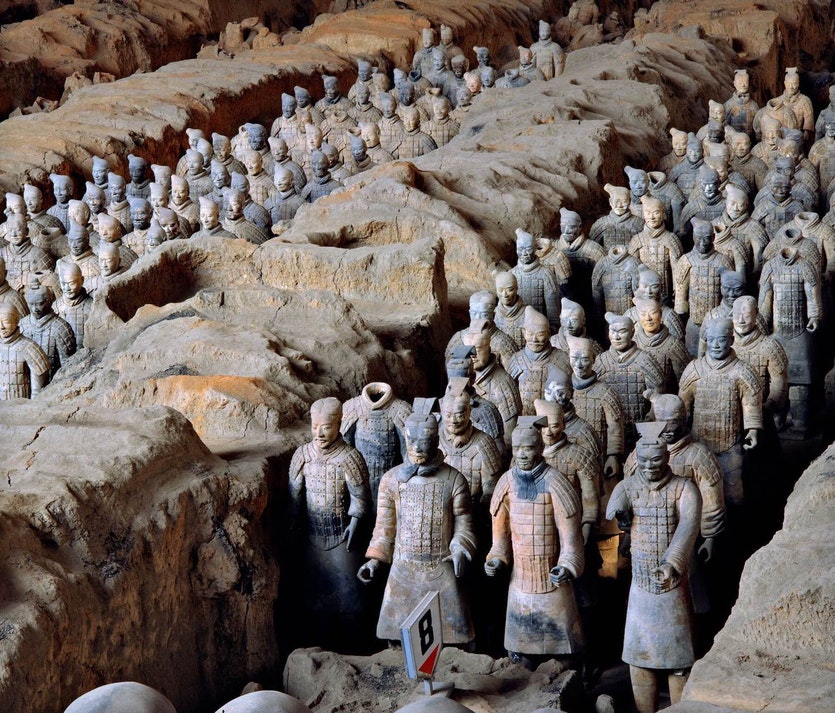DepthReading
Terracotta warriors did not receive anti-rust treatment
Research destroys theory that Chinese armourers used applications not discovered in the West until millennia later. Andrew Masterson reports.
Chinese craftspeople did not – that’s did not – invent a sophisticated and highly effective anti-rust treatment more than 2000 years ago, researchers have found.
Work led by archaeologist Marcos Martinón-Torres of the UK’s University of Cambridge analysing the weapons of the famous Qin Terracotta Army of Xi’an has largely demolished the popular theory that its makers were well aware of the anti-rusting properties of chromium.
The life-size ceramic soldiers were constructed and placed in three pits inside the mausoleum of Qin Shihuang (259–210 BCE), the first emperor of a unified China.
They were initially excavated in the 1970s. So far, more than 2000 have been uncovered, all grasping fully functional weapons, with many of the bronze blades in a remarkably good state of preservation.
Although the primary research remains obscure, the idea quickly surfaced that the well-kept state of the weapons was the result of a coating, 10 to 15 microns thick, of rust-resistant chromium salt oxide.
And like most ideas that suggest the people of antiquity knew secret stuff subsequently lost for millennia, the notion eventually took on the patina of established fact.
In a paper published in the journal Scientific Reports, Martinón-Torres and colleagues present evidence that should – but probably won’t – lay the theory to rest once and for all.
The archaeologists analysed weapons, lacquer and soil from the site, testing for chromium traces. They also attempted to recreate the alleged “chromate conversion coating technology” and put it through some accelerated ageing tests.
Their conclusions are predictably banal. After testing 464 weapons found at the site, they found chromium on just 37.
Furthermore, even with so few positive results, they found that degree of blade preservation did not correlate with the presence of chromium in any significant measure.
Of the blades that did contain traces, most of them did so near the base, close to where the weapons’ wooden hafts, or handles, or grips, all long rotted away, would have been. The element was found on the business end of swords or arrows in only 2% of cases.
On the other hand, it was found to be plentiful in the lacquers used by the craftspeople to coat the actual soldiers and, probably, the weapons’ woody bits.
“We demonstrate that chromium on the metals is contamination from nearby lacquer after burial,” the researchers write.
“The chromium anti-rust treatment theory should therefore be abandoned.”
Instead, they note, the excellent preservation of the weapon blades can be better explained by “the moderately alkaline pH and very small particle size of the burial soil, in addition to bronze composition”.
Category: English
DepthReading
Key words:

